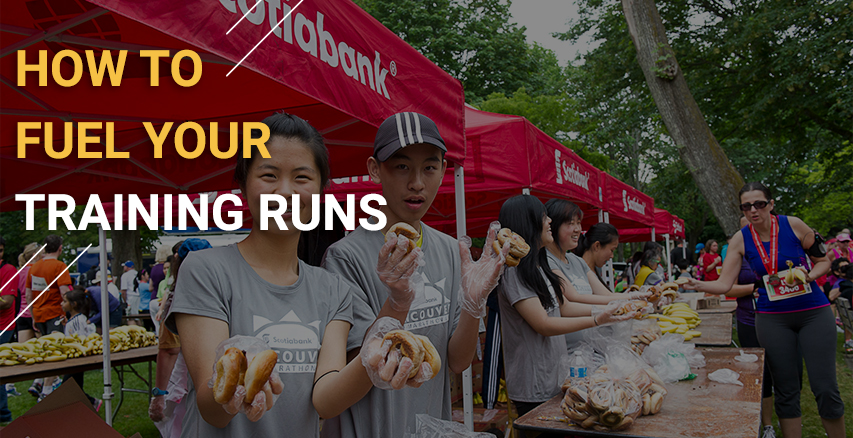
By Kim Doerkson
Regardless of whether you’re training for a road or a trail race, if you’re racing for over an hour, it is worth looking into how to fuel your training runs. It may seem counterintuitive to eat during a run, especially if one of your goals is weight loss. When the time spent running increases, it’s beneficial to have some kind of fuel to keep energy levels up. Think of it like driving a car: if the tank is full, there’s no risk or fear of the vehicle breaking down; on the other hand, if the gas level gets low, it could damage the engine and leave you stranded on the side of the road. The same is true for running.
So what is the best thing to eat during a run to avoid hitting the wall / bonking? Like anything, it’s personal, but there these are a few go-to’s for runners:
- Gels. These are widely available at any running or outdoor sports store and are the most common sources of fuel during races. Essentially just little packets of sugary goo, gels are an easily digestible sugar source that can also include electrolytes and / or caffeine depending on the type. There is a large selection of flavours, and they’re conveniently pocket-sized, making them the most runner-friendly.
- Chews / Chomps: Exactly like they sound, chews are the runner’s version of gummy candy. Much like gels, they are made with sugar and can have electrolytes and / or caffeine to help boost your energy levels during a run. Unlike gels, chews require a bit more work: they needed to be chewed (hence the name), and more of them need to be consumed to match the caloric intake of a gel. Typically 4 chews are equivalent to 1 gel; this is great if you prefer to eat throughout the run, and not just in bursts like you would with gels. Just make sure to try a number of types are some get stuck in your teeth more than others!
- Candy: Sugar-highs in children after eating sugar is the result runners are looking for; but maybe not to the extreme of the sugar-crash and crying after. Most people have a favourite candy, so it’s a good start to fueling during the run. Bringing wine gums, or any gummy candy keeps blood sugars up if they start to falter, and taste good at the same time. Their only downfall is that they’re straight-up sugar. Chews and gels will have a mix of electrolytes in them too which helps to keep electrolyte balance in check when sweating out salts on a run.
- Dried fruit: Simple and natural. Taking a ziplock bag of dried dates, figs, raisins etc. is a great option while out for a long run. Natural fruit sugars are readily accepted by most stomachs as an easily digestible fuel source.
- Energy balls: These are most common during big train runs as there is more opportunity for slower paces while trekking up hill, and typically take longer than a road run due to technical terrain and elevation changes. Easy to make at home, energy balls consist of a mixture of dried fruit, nut butters, chocolate, coconut, and various seeds. All natural ingredients with good fats, sugars, and a little protein goes a long way when out for a long time!
For all of these options, practice goes a long way. Don’t show up to race day and decide to take a gel or eat during the race if you haven’t practiced in training. It takes time to get your body used to fuelling while running, so include it into your training plan. Also be sure to research what in-race fuel is available and if it’s not what you’re used to, make sure to pack what your need before getting onto the start line.







